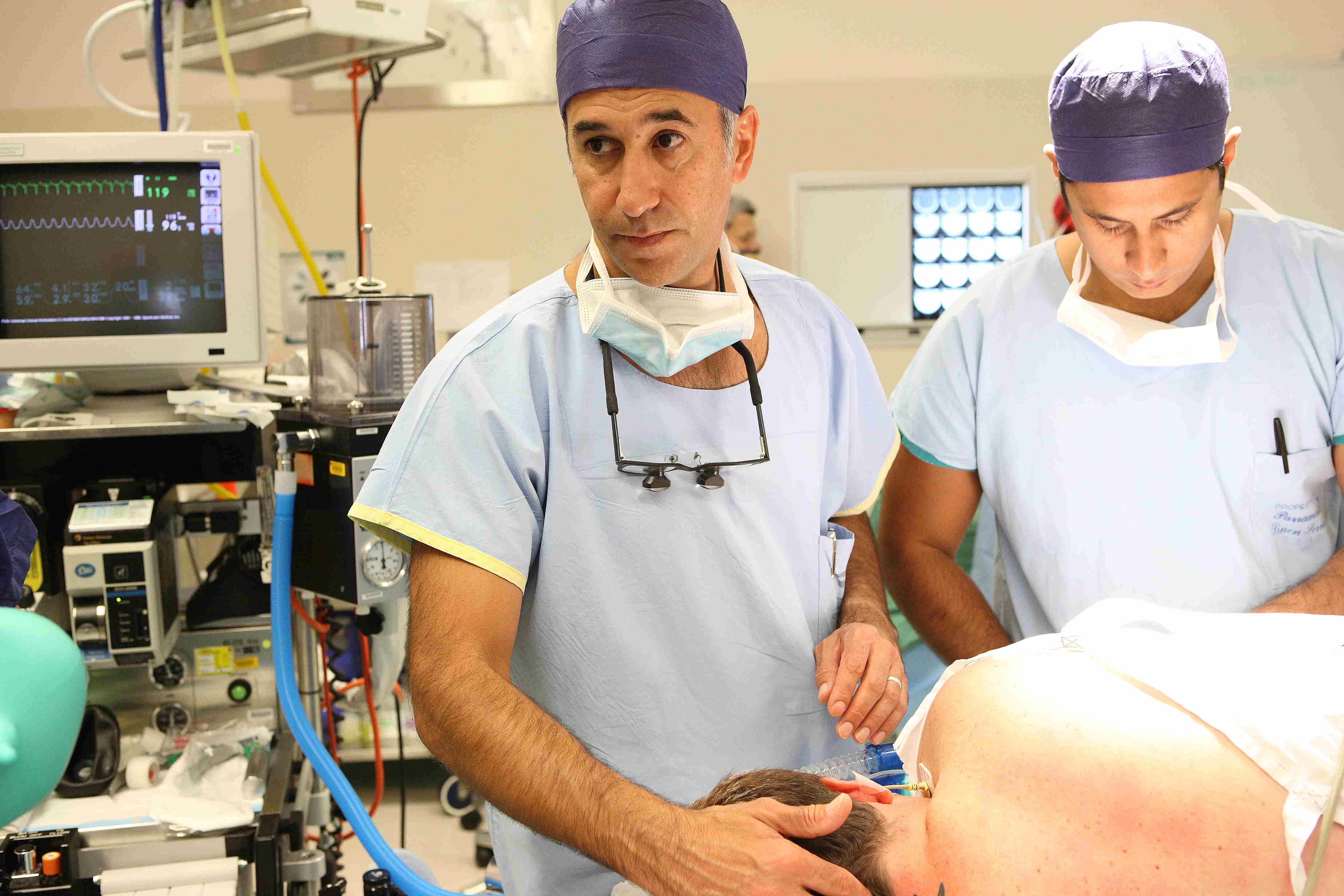Blepharoplasty is a term used to describe the surgical correction of sagging, or baggy, eyelids.
Upper eyelid blepharoplasty
An upper eyelid blepharoplasty may be undertaken for aesthetic and/or functional concerns. Ageing and sun exposure cause a downward movement of the outer corner of the eye as well as stretching of the eyelid skin, which gives a ‘hooded’ appearance. Frequently there is a downward movement of the outer half of the eyebrow itself. At the inner corner of the eye there is frequently a prominent bulge of fat.
Most of these features can be addressed through a procedure upon the eyelid itself, in which excess skin and muscle, as well as fat, can be reduced to give a brighter, more rested appearance to the eyes. Brow frown lines may also be addressed through an upper blepharoplasty incision. It is usually performed under sedation (twilight) and local anaesthetic as a day only procedure.
In some patients, however, it is the brow that is the primary problem with the eyelid secondary. In these patients a brow lift, usually combined with a blepharoplasty, is most appropriate. Upper lid blepharoplasty may be combined with other facial rejuvenating procedures such as lower blepharoplasty, brow lift or facelift operations.
Lower eyelid blepharoplasty
Lower eyelid blepharoplasty is a more involved undertaking and is impacted upon more significantly by factors such as sun damage to skin, poor elasticity of lower eyelid structures and ageing. It enables treatment of both skin excess and fatty herniation (bags). These can be achieved by approaches from within the eyelid, or through outside of the lid near the eyelashes. Fatty bulges can be removed or redistributed to achieve a more youthful appearance to the lid. It is often done in combination with elevation and suspension of the outer corner of the eye, so called canthopexy or canthoplasty. Again, lower blepharoplasty can be done in concert with other facial rejuvenating procedures.
If you have excess skin in your upper eyelids which feels heavy, hooded or even seems to partially obstruct your vision or if you have lower eyelid bags, you may be a candidate for blepharoplasty or eyelid surgery. A personalised consultation with A/Prof Gianoutsos will provide you with an experienced and careful assessment of your concerns and the appropriate approach to achieve your desired result.
A/Prof Gianoutsos performs blepharoplasty surgery under either sedation (so-called twilight) of general anaesthesia depending upon your wishes and the extent of your procedure. In either case, your anaesthetic will be done by one of the expert and experienced specialist anaesthetists with whom A/Prof Gianoutsos works on a regular basis.
Any excess skin, muscle or fat is removed through inconspicuous incisions in the upper lid skin crease or the lower lid’s natural skin crease.
Blepharoplasty is very often combined with other rejuvenative procedures such as face and neck lift and brow lift.
The skin is sutured using a fine stitch which runs beneath the skin which means there are no stitch marks. Cool packs will be placed over your eyes immediately after the procedure.
Cool packs will be placed over your eyes immediately after the procedure. You are best to keep your head elevated.
You will have some swelling and bruising for around two weeks depending upon the extent of your procedure.
Most often eyelid surgery is done as a day only procedure although if the lower eyelids are done as well patients often elect to stay in overnight.
After discharge you will be seen at A/Prof Gianoutsos’ rooms at around 5 days to check your incision lines and remove the sutures.
You will then be reviewed at around 6 weeks and then six and twelve months.
A/Prof Gianoutsos and his staff are available at any time, however, should you have any queries or concerns.
For the first 72 hours you should minimize any physical activity, particularly lifting, straining and stooping.
Depending upon the extent of your procedure, you will need around two weeks out of your normal circulation.
You should avoid very stressful physical exertion for 4 weeks.
It usually takes around 2 to 3 weeks to see the results of your surgery. Where your lower eyelids are also done, this may take a little longer to settle.
All surgery carries at least some degree of risk. These are minimized by ensuring you are as healthy as possible and prepared for the operation, by selecting a properly qualified and experienced surgeon and allowing yourself a proper recovery period. The particular risks as well as the expected perioperative course will be discussed in detail with you at your consultation and you will have the opportunity to ask any questions.

Our Procedures

Our philosophy is to treat all patients as we would be expected to be treated ourselves.
A/Prof. Mark Gianoutsos


